A Story of Queer Nature-Connection
I am who I am today in part because of programs like the ones run by Women’s Wilderness.
Queer Nature, the program I co-facilitate at WW, which teaches survival skills and natural crafts to the LGBTQ+ community, would also probably not exist if it hadn’t been for my initiation into nature-connection at a pivotal age.
When I had just turned 16, I embarked on a summer-long backpacking intensive (comparable to Outward Bound’sprograms) in Northern California. It gave me an experience like none I’d had before. We built a community through a collective journey of intense physical challenge, multi-day wilderness immersion, and the wonderful, silly, and raw human bonds that eventually permeate a group experiencing those things together. We were a small group of only six youths led by two older counselors. Our biggest achievement that summer was summiting Mt. Whitney, the highest peak in the lower 48 states, in the course of an eleven day out-and-back backpacking trip.
Like any 16 year-old girl, I had a lot going on. I had just started dating my first girlfriend — which amounted to a de-facto “coming out” to my parents and friends — had cut my long hair extremely short, and was also struggling with my relationship to my body and to food. Some might say that backpacking for seven weeks is not a good idea for a teen struggling in that way. But actually, it was the most formative adventure of my youth and set my relationship to my body and food on a healthier track at a moment when it surely would have gotten worse.
Risk, or at least the psychological element of risk that happens naturally when you go on your first week-long backcountry trip, was actually an essential part of me becoming a more self-regulating, and therefore more healthy and aware person (something that is corroborated by anthropologists and modern rites-of-passage advocates who study initiation rituals in different human cultures). Some element of uncertainty or risk seems necessary for us, as young people, to understand the terms of human life on earth, and therefore engage with it more deeply and authentically.
My vision of myself changed that summer.
Experiencing my body as a means for adventure was essential for me to have a healthy relationship with it, and gave me a degree of self-sufficiency previously unknown. On a level beyond the self, I also experienced myself in a new way as a necessary member of a group who had to stick together to thrive in a remote setting. In order to accomplish our daily mileage goals, our life together had to be highly structured; camp had to be set up and taken down in circadian rhythms, meals cooked and prepped, and maps scouted. And obviously, we all had to share the great nightly responsibility of ensuring that funny jokes and stories were shared before bed. Each of us needed to take on certain roles in order for every day to flow smoothly.
Through this I was able to re-envision my body as a vital tool capable of amazing things, and add an important layer to my social identity built around the importance of whatever my role in the team was at the time. I did not identify with mainstream cultural definitions of femininity and, that summer, I was able to experience what seemed like a kind of gender-utopia, where we existed in a small little tribe and our duties and responsibilities to ourselves and each other didn’t really vary much with gender. We all put one foot in front of the other; we all walked the same number of miles; we all had to eat and we all had to dig a hole nearly once a day, too.
That summer got me hooked on long-distance backpacking and right after I finished high school, I hiked the Long Trail in my home state of Vermont. I also did some week-long hikes on sections of the Appalachian Trail throughout the northeast.
I fit easily into trail culture, a culture that drew eccentric and contemplative people who seemed to walk on an edge between civilization and wildness, people who seemed to take the norms and machinations of society with a grain of salt, with a trickster’s wink and a sage’s amused smile. For a young queer and gender non-conforming person like myself, trail culture was like the nature-based alternative to the rural punk culture that I had somewhat reluctantly participated in in high school because it had been the only ‘alternative’ thing around. But there was something hopeful and curious about the culture of the trail that enchanted me. Punk culture didn’t have that, although it left its own subversive imprints on me in the form of many tattoos and an enduring mohawk that I’d sport through most of my twenties.
As life took me through college, grad school, and the inevitable world of “adulting,” it became harder and harder to indulge my love for long distance backpacking due to the time, expense, and necessary gear upkeep required. Even now, despite some seasonal wilderness guiding that gets me out into the backcountry a couple times a year, it is difficult to only have that sort of connection once in a while.
This is where my journey with naturalism and earth-based skills enters the picture, which have given me tools for connecting deeply and meaningfully with the natural world on a much more regular and low-tech basis. These skills completely hinge on an incredibly resilient set of gear: namely, the human mind, body, and the raw materials of the natural world.
This is where my journey with naturalism and earth-based skills enters the picture, which have given me tools for connecting deeply and meaningfully with the natural world on a much more regular and low-tech basis. These skills completely hinge on an incredibly resilient set of gear: namely, the human mind, body, and the raw materials of the natural world.
In my mid twenties while still living in my home state of Vermont, I signed up for a nine-month course on wilderness survival skills. This course met for one weekend intensive per month and focused on the fundamental skills to apply in emergency survival situations — shelter-building, making fire without matches or lighters, boiling and purifying water, and eventually, foraging, hunting, and trapping food.
At the end of nine months of learning and pushing past what before seemed like insurmountable feats, my class of seven walked into Vermont’s northern hardwood forests for four nights with nothing except the clothes on our backs.
We were immediately welcomed by a summer downpour that continued through the entire first day of our journey. Our group shelter went up in the rain, and as soon as we had enough of the roof built to cover our fire pit, we began using scavenged wood to create fire-by-friction. A few hours after dark had set in, a tiny orange ember emerged from the wet, womblike darkness. We had fire, and it would transform into a constant living presence that would become the center of our universe for the rest of the trip.
The next day, we carefully peeled sections of bark from young white pine trees, folding them into origami-like containers to boil and hold our water. Most of the next four days were spent in constant cycles of gathering firewood, tending fires, heating rocks to boil new water, and resting. Food ended up being last on the priority list, which is common in survival situations. Still, we were able to treat ourselves to wild leeks, oyster mushrooms, and some roasted bullfrog legs.
Although the survival trip was the most concise and perhaps iconic adventure of the year, in the course of preparing for it I was initiated even more deeply both into my relationship to nature and what it meant to be to be queer.
I began to learn plant and tree identification, wildlife tracking, and the enigmatic language of birds, studies that last a lifetime and bear a slow-growing fruit that is best described as the fruit of belonging. Slow and tedious relationship building within the natural world paid off, I learned, because it meant that nearly everywhere I went I would have a primal context for relating to the place I was, and to the non-human beings within it. I have never felt that this is guaranteed to me in the human world. There is an incredible, quiet kind of power in that. The non-human world is one of my greatest allies.
As the accessories and conveniences of modern life were systematically pared away in that initial nine-month training, I put in many hours of study and practice outdoors that had little to do with the social world, or at least the human one I’d known. I found that the non-human world was social too, just in a vastly different definition of the word.
Although more traditional conservation-based environmentalism tells humans we are only “visitors” in wild places, and must “leave no trace.” Learning the ecological literacy necessary to (even barely) survive without civilization taught me that we do, indeed, leave a trace. I’m not talking about visible traces per se, nor am I condoning leaving human artifacts behind in the outdoors. I’m speaking more of an energetic or perceptual trace, the way we affect bird song with our movements or the way that we broadcast scents that testify to our presence for creatures with superior senses of smell, even the sound-patterns we make while walking on dry leaves.
The truth is, from the perspective of the non-human world, that we definitely do create a trace, so the question then becomes: what trace will we create?
The tools to answer this question are those cultivated by tribal, land-based peoples the world over: profound situational awareness, ecological literacy and pattern recognition, and the physical and mental arts of stealth and concealment. Slowing down and tuning in to the impact they have in the world is vital for wild animals that earn their living from a dynamic and uncertain landscape. When I began to learn how to do it, too, it vastly expanded (not impaired) my paradigm for environmental stewardship. It was very empowering because anyone could learn these things, regardless of their gender, their sexuality, or other social status. The natural world was there, ready as an unbiased teacher.
I had always been attracted to so-called ‘survival skills,’ but for a constellation of reasons the typical avenues of learning those things weren’t available to me. There were no sportsmen in my family and as far as I knew no one close to me really had an interest in hunting. Obviously Boy Scouts was out, and I couldn’t join the military because I was very openly queer and my androgynous appearance easily stood out (DADT has since been repealed).
Growing up in a small town with no one to talk to about my burgeoning identities, and few (if any) roadmaps in popular culture for a path to queer adulthood, I had to learn the arts of emotional survival by myself. It just made sense that when the time came, I would be inclined to learn about physical survival too, about how to make do when civilization with all its comforts and attainments didn’t come through for me. In a twist of fate, failing to be fully met by culture triggered a deep desire to create new culture.
The concept of nature-based queer culture does not come naturally to everyone.
After all, gay, lesbian, and trans people have historically been represented as ‘unnatural’ in our society, primarily in the authoritative dimensions of psychology and medicine. For many queers, especially the gender non-conforming among us, the specter of gay bashing hovers over rural and remote areas, making us wary of being alone and questioning our self-reliance in those places.
Furthermore, queer culture in America has more or less formed in urban spaces, where formerly isolated LGBTQ people migrate from rural towns in order to find others like them, or they simply find themselves there working in single-gender environments, which is what happened in postwar America.
When I was growing up in rural New England, the options for queer socializing were mostly having to do with urban nightlife—clubs, bars, and partying— none of which very interesting or accessible to me. That said, I don’t want to diminish the vital work done by urban queers that made many of my civil rights possible. Urban queer communities and safe spaces were not born easily; they were fought for and ardently defended, as a chilling history of police raids on queer bars and clubs attests. The work I do now is only able to happen because I stand on the shoulders of the queer ancestors and elders who got arrested at bars for so-called ‘cross-dressing’ and rioted against police at Stonewall.
For people whose cultural identity has largely been formed and shaped around a narrative of not belonging, being unnatural, or being tokenized, there’s something incredibly radical and healing about learning how to engage with the natural world in a co-creative way. When you learn how to create fire without matches—that eternal symbol of home and community—or when you learn to decipher a story in a set of animal tracks, there is no denying that you are part of the natural world, and you do belong.

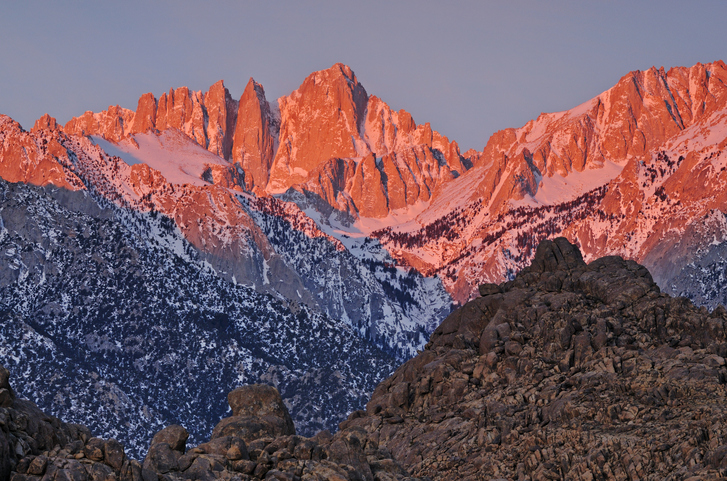
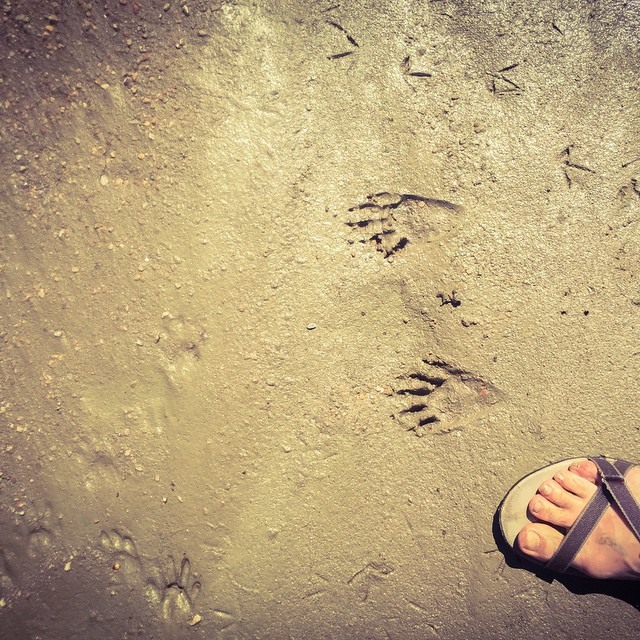
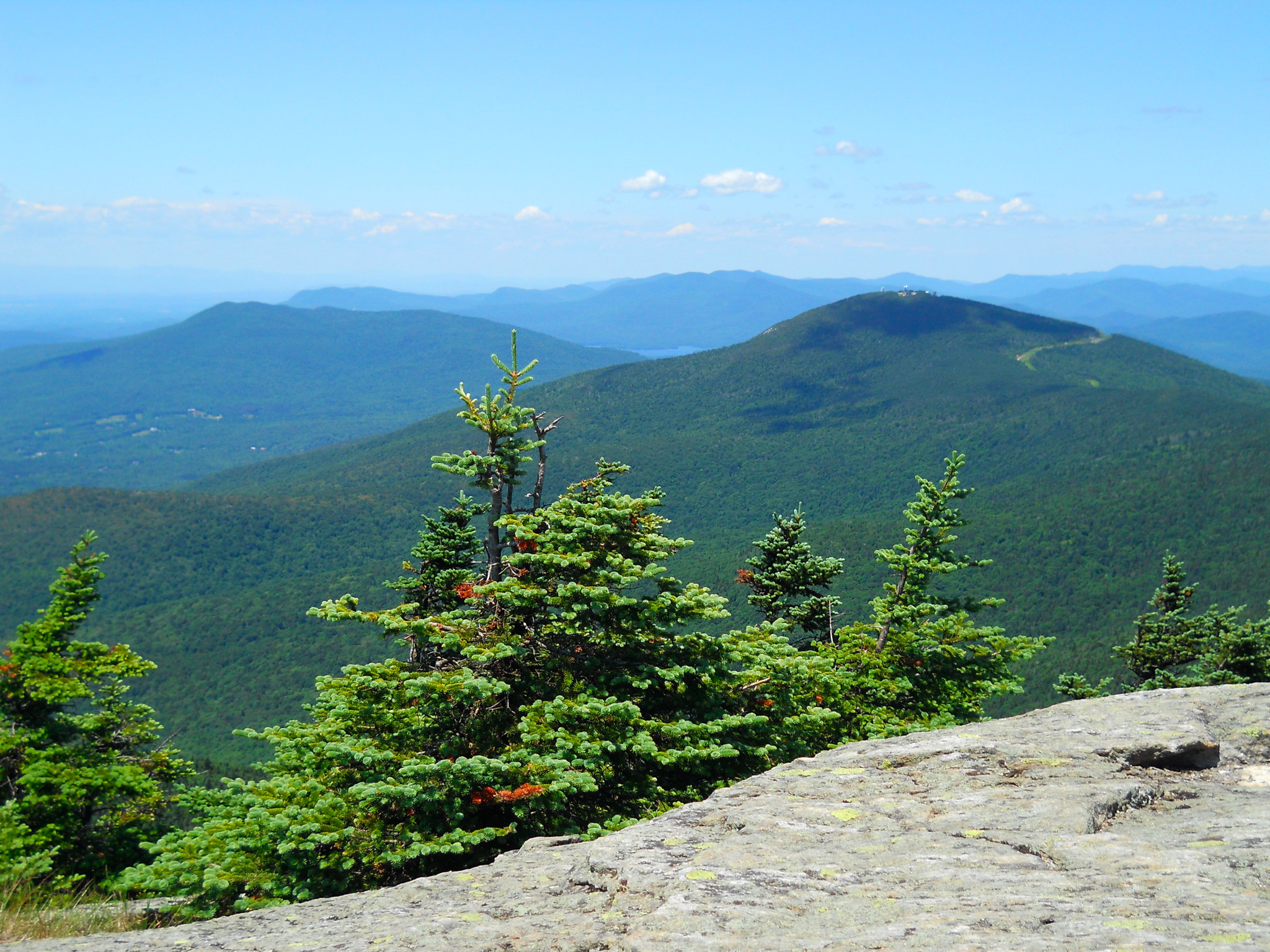
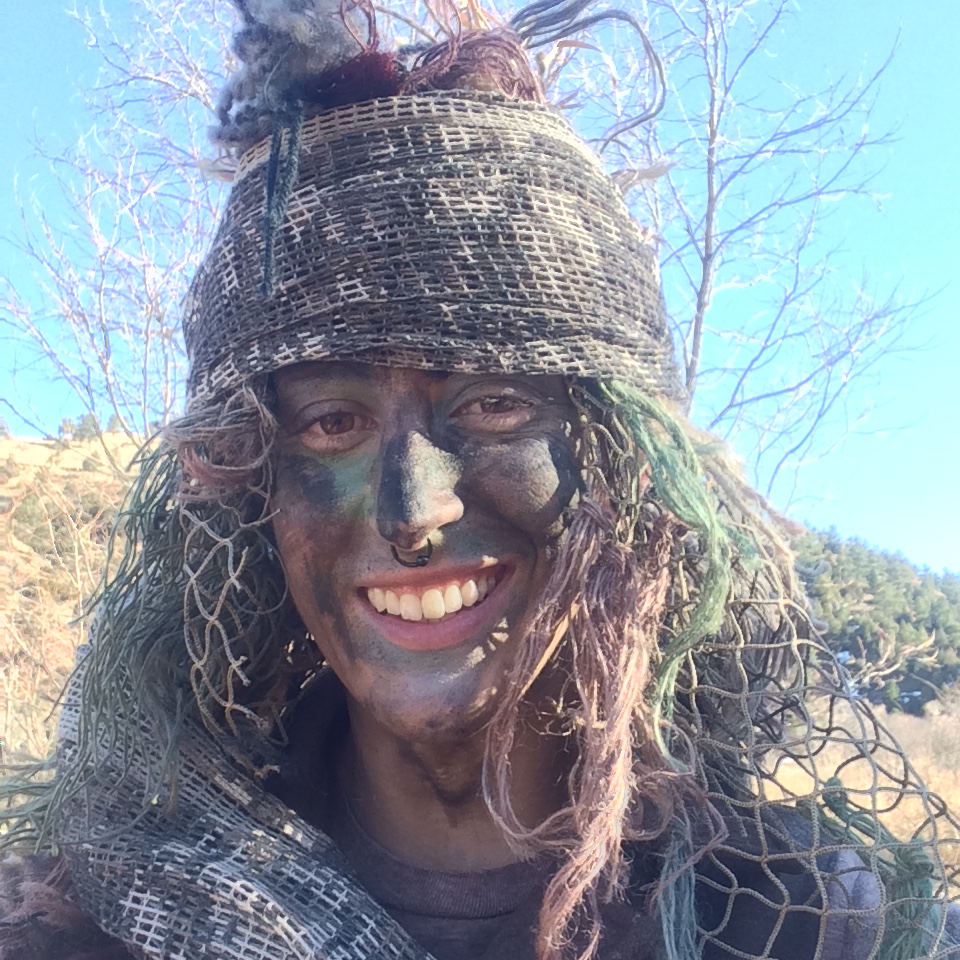
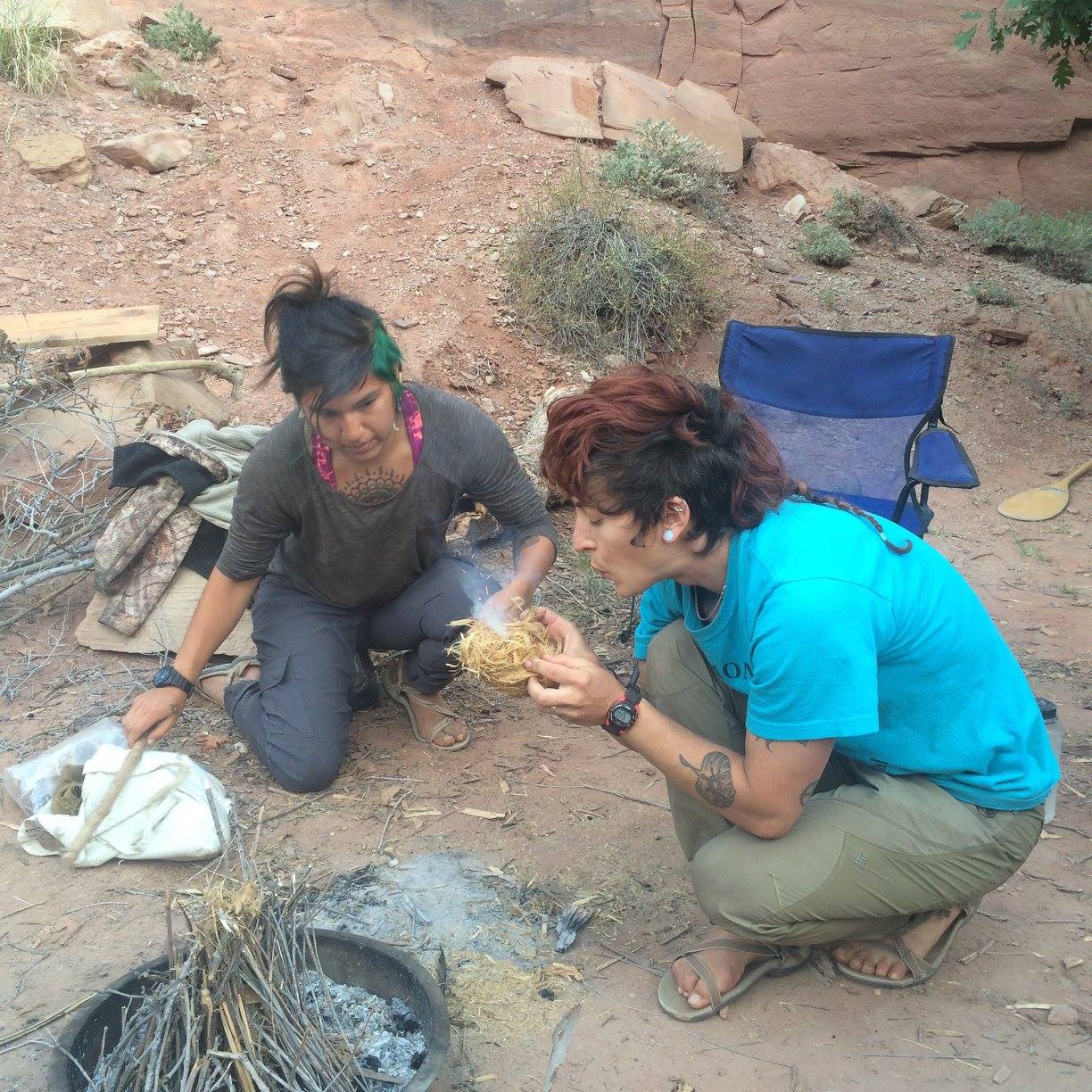
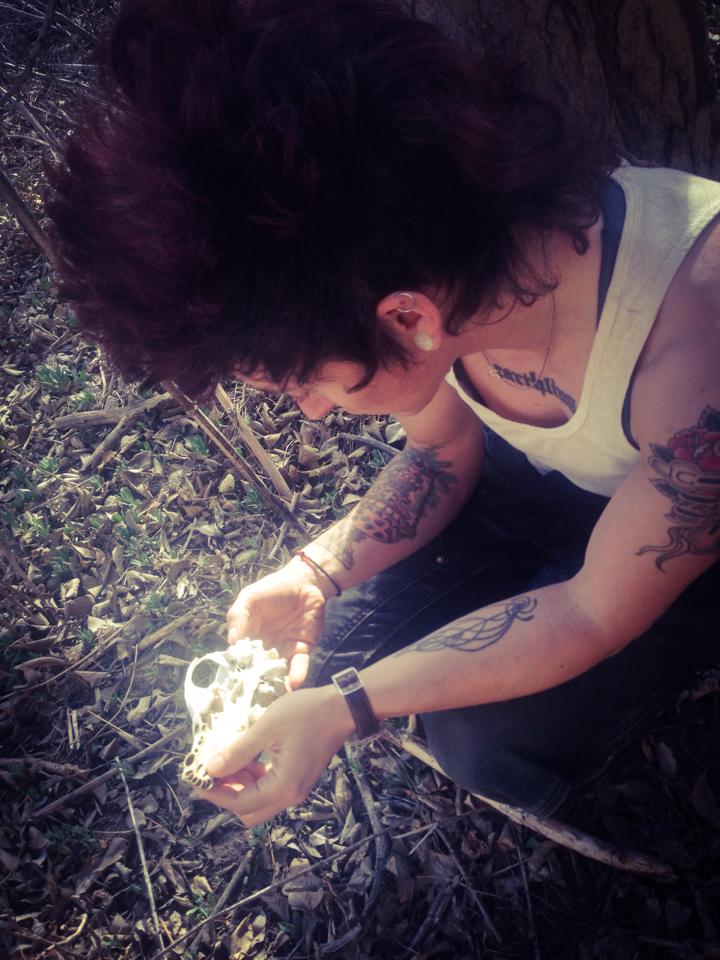

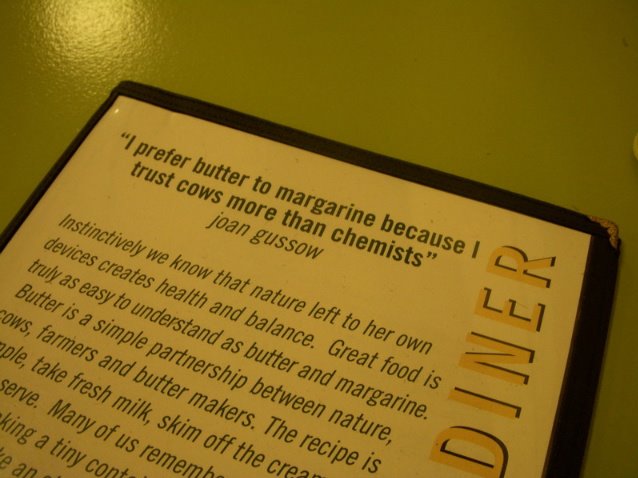
No comments:
Post a Comment